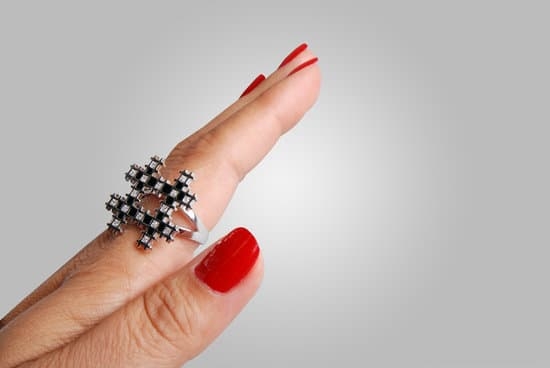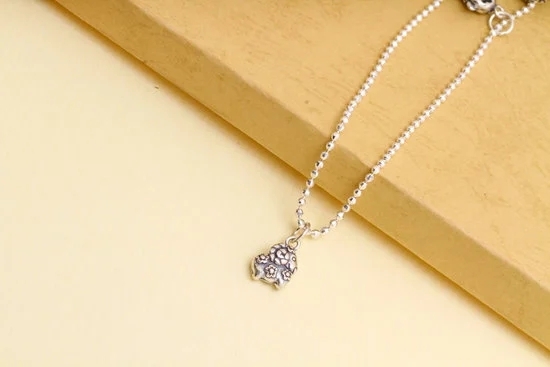Diamonds have long captivated the human imagination with their unrivaled beauty and brilliance. These precious gemstones have been prized throughout history and across cultures for their undeniable allure, making them a staple in jewelry.
But what makes diamonds so special, and why are they the go-to choice for those seeking to express their love, commitment, or status through jewelry? In this article, we will explore the fascinating world of diamond jewelry, delving into its rich history, extraordinary properties, symbolism, craftsmanship, and enduring value.
From ancient civilizations to modern societies, diamonds have held a profound fascination for mankind. The use of diamonds in jewelry dates back thousands of years, where they were coveted not only for their rareness but also for their ability to catch and reflect light like no other gemstone. This intrinsic property gives diamonds an unparalleled sparkle that instantly captures attention and adds an air of sophistication to any piece of jewelry.
However, it is not just their dazzling beauty that sets diamonds apart. Diamonds are also known for their incredible toughness and durability. In fact, they are the hardest naturally occurring substance on Earth.
This exceptional hardness makes them resistant to scratches and wear over time, ensuring that diamond jewelry can be cherished for generations to come. Additionally, diamonds possess a unique property called “fire,” which refers to the dispersion of white light into its spectral colors when it passes through a diamond’s facets. This mesmerizing display of prismatic hues further enhances the overall allure of diamond jewelry.
But beyond their physical attributes, diamonds also hold symbolic meaning in many cultures. They have become synonymous with love and commitment due to their association with engagement rings and wedding bands. Moreover, diamonds have historically been associated with wealth and status due to their rarity and exorbitant price tag. As such, wearing diamond jewelry has long been seen as a representation of one’s social standing or prestige.
In the following sections of this article series (see links below), we will dive deeper into the captivating world of diamond jewelry. We will explore diamond mining and sourcing, examining ethical considerations and industry practices. We will also discuss the intricate craftsmanship involved in cutting, shaping, and setting diamonds into exquisite jewelry pieces.
Furthermore, we will delve into alternative gemstones and materials that can be used in jewelry to offer variety beyond diamonds. Finally, we will provide tips on caring for diamond jewelry to ensure its lasting brilliance.
Join us as we embark on a journey into the enchanting realm of diamond jewelry, uncovering the reasons behind their timeless appeal and exploring the various facets that make them a beloved choice for adornment.
A brief history of diamonds in jewelry
Diamonds have captivated human beings for centuries, their allure dating back to ancient times. The use of diamonds in jewelry can be traced back thousands of years, with evidence of their presence in ancient civilizations such as India and Ancient Egypt. These early cultures were enamored by the beauty and rarity of diamonds, believing they possessed immense power and spiritual significance.
The earliest recorded use of diamonds in jewelry can be found in the Indus Valley Civilization, which thrived around 3000 BC. Diamonds were revered for their brilliance, symbolizing wealth and power. They were not only used as an adornment for rulers and nobles but also as talismans to ward off evil spirits.
In Ancient Egypt, diamonds held a similar status, representing the sun and imbued with protective qualities. They were often used alongside other precious gemstones to create elaborate pieces of jewelry for both men and women alike. As time progressed, diamonds continued to grow in popularity across various civilizations, with the Romans associating them with love and affection.
However, it wasn’t until the 15th century that the diamond’s prominence in jewelry truly soared. During this time, diamonds became highly sought after among European aristocracy due to their dazzling beauty and rarity. It was during this period that diamond engagement rings began to emerge as a symbol of betrothal and eternal love.
Today, diamonds continue to hold a fascination for people around the world. Their timeless appeal has stood the test of time, transcending cultures and trends. From ancient civilizations to modern society, the allure of diamonds in jewelry remains unwavering.
The extraordinary properties of diamonds
Diamonds are known for their extraordinary properties that make them highly coveted in the world of jewelry. These properties include brilliance, toughness, and fire, all of which contribute to the allure and value of diamond jewelry.
One of the key properties that makes diamonds so captivating is their brilliance. Diamonds have a unique ability to reflect light, creating a dazzling display of sparkle and shine. This is due to their high refractive index, which causes light rays to bend and bounce within the diamond, resulting in a brilliant display of white light.
In addition to their brilliance, diamonds are also incredibly tough. In fact, they are the hardest naturally occurring substance known to man. This hardness is measured on the Mohs scale, with diamonds ranking at a 10 out of 10. This means that diamonds are extremely resistant to scratching and wear, making them an ideal choice for everyday jewelry that can withstand the test of time.
Furthermore, diamonds possess a property known as fire, which refers to their ability to disperse white light into its spectral colors. This phenomenon occurs when light enters the diamond and is refracted multiple times before exiting through different angles. The result is a beautiful play of colors that adds depth and vibrancy to diamond jewelry.
Overall, the brilliant sparkle, exceptional toughness, and mesmerizing play of colors make diamonds truly extraordinary gemstones for use in jewelry. Their unique properties not only enhance the visual appeal but also contribute to their long-lasting durability and enduring value as precious gemstones for generations to come.
- The brilliance of diamonds is due to their high refractive index.
- Diamonds are extremely tough and resistant to scratching.
- Diamonds possess fire which creates a play of colors in diamond jewelry.
The symbolism behind diamond jewelry
Diamonds have long been revered for their symbolism in jewelry. They hold a special meaning and are often associated with love, commitment, and status. The symbolism behind diamond jewelry has deep roots and continues to play a significant role in the allure of these precious gemstones.
Love and Romance
Diamonds are commonly used in engagement rings, symbolizing everlasting love and commitment between two individuals. The tradition of using diamonds in engagement rings dates back to the ancient Romans, who believed that diamonds brought forth love and strength. Today, diamond engagement rings are a popular choice for couples around the world, representing the promise of forever.
Beyond engagement rings, diamond jewelry is often given as a romantic gift to celebrate special occasions or milestones in a relationship. Their brilliance and sparkle are seen as expressions of love and affection. Whether it’s a pair of diamond earrings or a diamond pendant necklace, these pieces serve as reminders of the strong emotional connection between loved ones.
Status and Success
Diamonds also carry a symbolism of status and success. Throughout history, diamonds have been associated with royalty, nobility, and wealth. They were worn by kings and queens as an outward display of power and opulence. Today, diamond jewelry still holds this association with affluence and achievement.
Wearing diamond jewelry can be seen as a symbol of accomplishment or social standing. From dazzling diamond bracelets to luxurious diamond necklaces, these pieces convey elegance and sophistication. Diamond-studded watches are particularly sought after for their ability to elevate one’s style statement while exuding an aura of success.
In addition to personal status symbols, diamonds also hold significance within certain professions or industries. For example, diamonds may be gifted or worn by high-ranking executives or professionals to signify leadership qualities, ambition, or exceptional performance.
Whether it’s capturing moments of love and devotion or conveying prestige and success, the symbolism behind diamond jewelry remains deeply ingrained in human culture. The allure of diamonds goes beyond their physical properties, making them a cherished choice for those seeking to express powerful emotions and desires.
Diamond mining and sourcing
Diamond mining and sourcing are significant factors to consider when it comes to the ethical considerations and industry practices behind diamond jewelry. The diamond industry has faced scrutiny for its impact on the environment and human rights in various parts of the world. This section delves into these concerns, highlighting efforts made by the industry to address them and offering insights into conscious consumer choices.
Environmental impact
One of the major ethical concerns surrounding diamond mining is its environmental impact. Traditional methods of mining can lead to deforestation, soil erosion, changes in water sources, and loss of biodiversity in the surrounding areas. Moreover, diamond mining operations often consume large amounts of energy, contributing to greenhouse gas emissions.
To mitigate these issues, many players in the industry have taken steps towards more responsible mining practices. For example, some companies have invested in reforestation projects to restore local ecosystems affected by mining activities. Others have implemented measures to minimize their carbon footprint by using renewable energy sources or offsetting their emissions. Furthermore, efforts are underway to develop more sustainable methods of diamond extraction that have a reduced ecological footprint.
Human rights concerns
Another key aspect of ethical considerations in diamond sourcing is ensuring that human rights are respected throughout the supply chain. In some regions where diamonds are mined, there have been instances of workers experiencing unsafe working conditions, low wages, or even forced labor. Additionally, conflict diamonds, also known as blood diamonds, have raised concerns about human rights violations and funding of armed conflicts.
To combat these issues, organizations such as the Kimberley Process Certification Scheme (KPCS) were established to prevent rough diamonds from entering the market illegally and funding armed conflicts. The KPCS requires participating countries to ensure that their diamonds are conflict-free through implementing strict controls and certification processes.
Furthermore, there has been an increased focus on responsible sourcing initiatives by jewelry brands and retailers. Many now require suppliers to adhere to specific codes of conduct that promote fair labor practices, safe working conditions, and protection of human rights. These initiatives aim not only to eliminate unethical practices but also to enhance transparency and traceability within the supply chain.
The craftsmanship behind diamond jewelry
The craftsmanship behind diamond jewelry plays a crucial role in showcasing the true beauty of these precious gemstones. Diamond cutting, shaping, and setting techniques have evolved over centuries, resulting in exquisite pieces that captivate the eyes and hearts of those who admire them.
Diamond cutting is an intricate process that involves transforming rough diamonds into polished gems with maximum brilliance and sparkle. The precision and skill required for diamond cutting are exceptional, as it involves strategically placing facets to optimize light reflection within the stone. Modern technology, such as laser cutting, has revolutionized the diamond cutting process, allowing for greater accuracy and efficiency.
Once a diamond is cut to its desired shape, skilled craftsmen focus on shaping the metal settings that hold the gemstone securely in place. This process requires keen attention to detail and a thorough understanding of various jewelry-making techniques. The metal setting serves not only as a functional component but also as an artistic element that enhances the overall design of the piece.
Setting diamonds requires expertise to ensure they are securely held in place while also allowing light to enter from multiple angles for maximum brilliance. Common setting styles include prong settings, bezel settings, pavé settings, and channel settings. Each style offers a unique look and provides different levels of protection for the diamond.
Craftsmanship is not limited to shaping and setting diamonds; it also extends to other decorative elements like engraving and filigree work. These additional touches elevate the aesthetic appeal of diamond jewelry by adding intricate designs or personalization. Skilled artisans spend countless hours perfecting these details using specialized tools and techniques passed down through generations.
Overall, the craftsmanship behind diamond jewelry showcases the dedication, experience, and artistry of jewelry makers around the world. Their commitment to excellence ensures that each piece is meticulously crafted to bring out the best in every diamond used. From precision cutting to expertly crafted settings, these skilled artisans contribute to creating timeless pieces of wearable art that celebrate the everlasting allure of diamonds.
| Craftsmanship | Data |
|---|---|
| Diamond Cutting Techniques | Skilled craftsmen use precision cutting techniques, including laser cutting, to transform rough diamonds into radiant gemstones. |
| Metal Settings | Experienced jewelers shape metal settings that securely hold the diamond while enhancing the overall design of the piece. |
| Diamond Setting Styles | Various setting styles, such as prong settings and pavé settings, are utilized to protect and showcase the brilliance of the diamond. |
| Decorative Elements | Engraving and filigree work add intricate designs and personalization to further enhance the aesthetic appeal of diamond jewelry. |
The enduring value of diamond jewelry
Diamond jewelry not only captures hearts with its beauty, but it also holds significant value as an investment and heirloom. Diamonds are known for their durability and long-lasting nature, making them an ideal choice for passing down through generations. In this section, we will explore the enduring value of diamond jewelry and how it can be both a wise investment and a cherished family heirloom.
One of the main reasons why diamond jewelry retains its value is due to the rarity and scarcity of diamonds themselves. Diamonds are formed deep within the Earth’s crust over billions of years under immense pressure and heat. The process of mining diamonds is complex and challenging, making them relatively scarce compared to other gemstones. This rarity contributes to the high demand and value placed on diamonds in the market.
Furthermore, diamonds have historically shown a steady appreciation in value over time. While fluctuations may occur due to various economic factors, such as supply and demand dynamics or global events, diamonds have generally proven to be a stable investment option. Unlike certain other luxury goods which may depreciate with time or changing trends, diamond jewelry tends to maintain or increase in value.
| Year | Average Annual Return (%) |
|---|---|
| 2000 | 3.17% |
| 2010 | 5.13% |
| 2020 | 6.12% |
This data represents the average annual return on investment for diamonds over several years. It demonstrates that diamond jewelry has consistently provided positive returns for investors, highlighting its enduring value as an investment asset.
In addition to being a sound investment, diamond jewelry also holds immense sentimental value as cherished heirlooms. Passed down from one generation to the next, diamond jewelry can become a symbol of family history and tradition. Whether it is an engagement ring or a pendant, the emotional significance attached to diamond jewelry further adds to its enduring value.
Overall, diamond jewelry’s enduring value is a result of its rarity, steady appreciation over time, and sentimental worth. Whether purchased as an investment or received as a family heirloom, diamond jewelry continues to captivate both investors and individuals with its everlasting charm.
Alternatives to diamonds in jewelry
While diamonds have long been the reigning gemstone of choice for jewelry, there is an increasing interest in exploring alternatives to diamonds. These alternative gemstones and materials offer a unique and personalized touch to jewelry pieces, allowing individuals to express their individuality and style. Let’s delve into some popular alternatives that are gaining traction in the world of jewelry.
One alternative to diamonds in jewelry is colored gemstones. Gemstones such as sapphires, rubies, emeralds, and amethysts are cherished for their vibrant hues and unique characteristics. They add a pop of color and personality to any piece of jewelry, making them a popular choice for those seeking something different from traditional diamond jewelry. Colored gemstones can hold significant meaning as well; for example, sapphires are often associated with wisdom and loyalty.
Another alternative gaining popularity is lab-grown diamonds. These diamonds are grown in laboratories using advanced technology that replicates the natural diamond formation process. Lab-grown diamonds possess the same chemical composition as natural diamonds but come at a more affordable price point. They are also considered more sustainable since they do not require mining. Their rise in popularity highlights a growing demand for environmentally-friendly options without compromising on beauty or quality.
Beyond gemstones, other materials can be used to create stunning jewelry pieces. One such material is sterling silver, which has become increasingly popular due to its affordability and versatility. Sterling silver jewelry offers a sleek and modern look that can be paired with various outfits and styles. It also provides an excellent backdrop for showcasing colorful gemstones or intricate designs.
As the world of jewelry evolves, so too does the desire for unique pieces that reflect personal taste and values. By exploring alternatives to diamonds such as colored gemstones, lab-grown diamonds, or even sterling silver, individuals can find exquisite options that suit their preferences while making a fashion statement. Whether seeking an alternative due to ethical concerns, budget constraints, or simply for a change of pace, there are various options available that can elevate any jewelry collection.
Caring for diamond jewelry
Diamond jewelry is not only a symbol of beauty and luxury but also represents a substantial investment. It is essential to properly care for and maintain your diamond jewelry to preserve its brilliance and sparkle for years to come. Here are some valuable tips on how to take care of your diamond jewelry:
- Regular Cleaning: Dirt, oils, and debris can diminish the shine of your diamond. Clean your diamond jewelry regularly by soaking it in a mixture of mild detergent and warm water. Use a soft-bristle brush (such as a toothbrush) to gently scrub the surface, paying extra attention to the back of the diamond where dirt tends to accumulate. Rinse thoroughly with clean water and pat dry with a lint-free cloth.
- Avoid Harsh Chemicals: Exposure to chemicals can damage both the metal setting and the diamond itself. Remove your diamond jewelry before engaging in activities such as swimming in chlorinated water or applying household cleaners or beauty products that contain harsh chemicals like bleach or chlorine.
- Storage: Proper storage ensures that your diamond jewelry remains safe from scratches and other damage. When you are not wearing your diamonds, store them individually in soft pouches or separate compartments of a jewelry box, away from other pieces that may scratch their delicate surfaces.
- Professional Maintenance: It is advisable to have your diamond jewelry professionally inspected and cleaned at least once a year by a reputable jeweler who has experience working with diamonds. They will be able to check for loose prongs or settings and address any potential issues before they become larger problems.
By following these tips, you can ensure that your diamond jewelry continues to dazzle for generations to come. Remember, diamonds are not indestructible, so it is crucial to handle them with care and seek professional assistance whenever necessary for maintenance or repairs.
Conclusion
In conclusion, the allure of diamond jewelry is undeniable and has captivated humans for centuries. From ancient times to modern fascination, diamonds have held a special place in the world of adornment. Their extraordinary properties of brilliance, toughness, and fire make them a truly unique gemstone that stands apart from all others.
Not only do diamonds possess exceptional physical qualities, but they also hold deep symbolism in our society. Diamond jewelry often represents love, commitment, and status. Whether it’s an engagement ring to symbolize a lifelong partnership or a piece of extravagant diamond jewelry to signify wealth and prestige, diamonds carry a powerful message.
While the beauty and symbolism of diamond jewelry are undeniably enticing, it is crucial to consider ethical sourcing and industry practices when purchasing these precious stones. The diamond mining industry has its fair share of challenges when it comes to ethics and sustainability. Ensuring that diamonds are sourced ethically helps preserve the value and charm of these gems while protecting the communities impacted by their extraction.
The craftsmanship behind diamond jewelry is also worthy of admiration. The intricate art of cutting, shaping, and setting diamonds requires immense skill and precision. The hands that bring these pieces to life transform rough stones into exquisite works of art that will be cherished for generations to come.
Diamond jewelry holds not only aesthetic appeal but also substantial investment potential. With their enduring value over time, diamonds can become valuable heirlooms that hold sentimental and financial worth.
While diamonds remain highly sought after in the realm of jewelry design, there are alternatives available for those seeking uniqueness or personal preferences. Exploring other gemstones and materials allows individuals to create personalized pieces that suit their style while still maintaining timeless elegance.
In summary, diamond jewelry continues to enchant us with its everlasting charm. Its beauty, symbolism, craftsmanship, enduring value ,and versatility remain unmatched in the world of adornment. By appreciating both the physical properties and ethical considerations associated with diamonds in jewelry, we can fully embrace their allure and cherish these precious gems.
Frequently Asked Questions
Why do we use diamond as jewellery?
Diamond is commonly used as jewellery due to its aesthetic appeal and rarity. Diamonds are known for their dazzling sparkle and brilliance, making them highly attractive as adornments.
Additionally, diamonds have a long-standing association with luxury, wealth, and status, making them a popular choice for high-end jewellery pieces. The durability of diamonds also makes them suitable for everyday wear, ensuring that the jewellery will last for generations.
What are 3 benefits of diamonds?
One benefit of diamonds is their hardness and durability. Diamond is the hardest naturally occurring substance on Earth, which means it can withstand daily wear without easily scratching or breaking. This makes diamond jewellery a long-lasting investment that can be treasured and passed down through generations.
Another benefit is that diamonds are highly resistant to chemicals, making them easy to clean and maintain their sparkle with simple cleaning techniques. Lastly, diamonds hold their value well over time due to their scarcity and desirability, allowing them to serve as a store of value or investment.
What is so special about diamonds?
What sets diamonds apart from other gemstones is their physical properties. Diamonds exhibit exceptional unique qualities such as exceptional brilliance, excellent refractive index (the ability to bend light), and high dispersion (ability to split white light into spectral colors). This combination gives diamonds an unparalleled sparkle and play of light that cannot be replicated by any other gemstone.
Moreover, diamonds possess extraordinary hardness and toughness compared to other gemstones. These attributes make diamonds not only aesthetically stunning but also practical for everyday wear in jewellery settings.

Welcome to my jewelry blog! My name is Sarah and I am the owner of this blog.
I love making jewelry and sharing my creations with others.
So whether you’re someone who loves wearing jewelry yourself or simply enjoys learning about it, be sure to check out my blog for insightful posts on everything related to this exciting topic!





